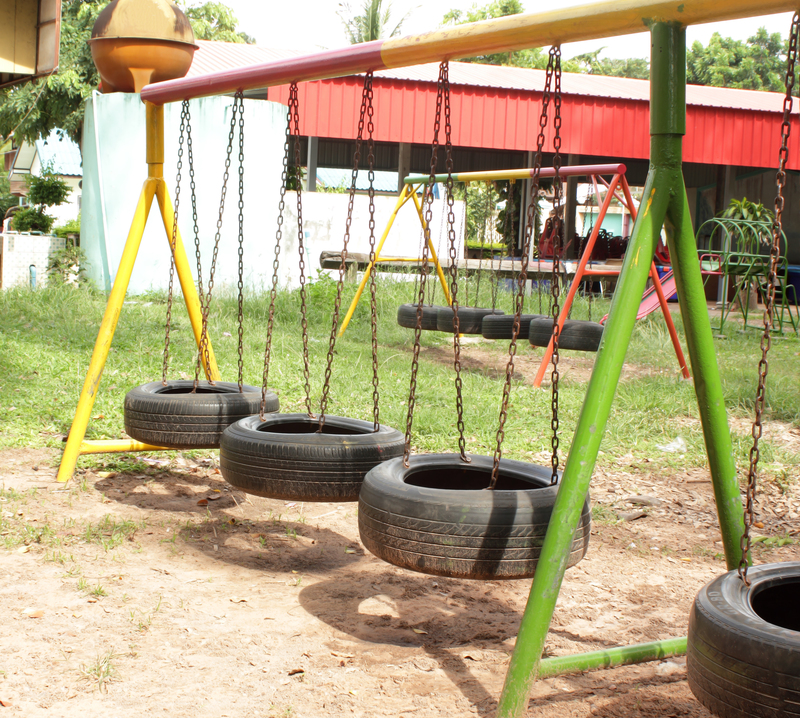Making the Decision to Junk, Sell, or Donate Large Furniture: An In-Depth Guide
Are you staring at a massive couch that's outlived its welcome, or a huge cabinet that doesn't fit your decor anymore? Deciding whether to junk, sell, or donate large furniture can be overwhelming. With practical and eco-friendly concerns, sentimental attachments, and logistical headaches to consider, this guide will help you navigate your options for disposal or rehoming large furniture with confidence.

Why Is Large Furniture Removal a Big Deal?
Unlike small household items, large furniture pieces require more thought when you want them out of your home. Their size, weight, and condition play significant roles in your decision to junk, sell, or donate. Whether you're moving, downsizing, or just redecorating, making sustainable and thoughtful choices can save you money, help the community, and reduce landfill waste.
Common Large Furniture Items Considered for Removal
- Sofas and sectionals
- Beds and mattresses
- Dining tables and chairs
- Dressers and wardrobes
- Entertainment centers
- Bookcases and shelving units
- Desks and office furniture
- Outdoor patio sets
Key Factors to Consider Before Deciding
Before you pick between junking, selling, or donating your bulky furniture, there are important considerations to weigh:
1. Furniture Condition
Is your furniture gently used, heavily worn, or broken? Many donation centers and buyers accept only items in usable condition. If it's damaged beyond repair, junk removal may be your only option.
2. Logistics: Size and Weight
Can you move the furniture yourself? Consider doorways, stairs, elevators, and transportation. Larger items might need special tools or professional movers, which can affect your choice.
3. Time Constraints
Do you have weeks or just a day to clear things out? Selling or donating furniture often requires time, while junk removal services can handle quick pickups.
4. Sentimental or Monetary Value
Is the furniture a cherished family heirloom, or does it have substantial resale value? This might sway you toward selling, gifting, or restoring it rather than tossing it out.
5. Sustainability and Environmental Impact
Consider the ecological consequences. Donating or selling helps extend the life of your items, keeps them out of landfills, and benefits others. Junking should be a last resort.
Option 1: Junking Large Furniture
When Should You Junk Furniture?
Junking -- or professionally disposing of -- large furniture items is suitable when:
- The item is broken, unsafe, or infested (e.g., with pests or mold).
- It's badly stained, irreparably damaged, or missing parts.
- It fails charity or buyer quality standards.
How to Junk Furniture Responsibly
- Bulk Trash Pickup: Check local regulations. Many cities offer scheduled bulk waste collection, but may require fees or appointments.
- Private Junk Removal Services: Companies like 1-800-GOT-JUNK or Junk King can remove items from your home for a fee.
- Recycling Centers: Some centers accept large wooden, metal, or upholstered furniture. Parts may be separated for recycling, reducing your environmental impact.
- Dumpster Rental: For major home cleanouts, renting a dumpster allows disposal of multiple pieces, but is pricier.
Tip: Before junking, remove reusable hardware, metal, and textiles for recycling. This small step can reduce landfill waste.
Option 2: Selling Large Furniture
When Should You Sell Large Furniture?
Selling is ideal when your furniture is gently used, clean, and still in style. Solid wood, branded, vintage, or unique pieces can fetch a good price, especially if you have some time to spare.
Where to Sell Large Furniture
- Online Marketplaces: Facebook Marketplace, Craigslist, OfferUp, LetGo, Nextdoor. These platforms let locals find and pick up your items.
- Consignment Stores: They sell on your behalf for a fee or percentage of the sale.
- Auction Houses: Good for antiques, vintage, or high-value furniture.
- Garage and Estate Sales: Great if you're selling multiple items and want a quick turnover.
Tips for Selling Furniture Efficiently
- Clean Thoroughly: Remove stains and odors for best presentation.
- Take Clear Photos: Shoot from multiple angles in natural light.
- Provide Details: Include measurements, brand, age, and any known flaws or history.
- Be Honest: Accurately describe the condition to avoid disputes.
- Set Realistic Prices: Check similar listings to stay competitive and open to negotiation.
- Arrange Safe Pickups: Meet buyers in public spaces if possible or ensure someone else is present at home.
Selling is a rewarding way to recoup some of your investment while helping others furnish their spaces affordably.
Option 3: Donating Large Furniture
When Should You Donate Furniture?
Donation is perfect for sturdy, clean, and safe furniture that no longer fits your needs but could help someone else. Most charities won't accept items with pests, significant damage, or major stains.
Where and How to Donate Large Furniture
- Nonprofits and Charities: Goodwill, Salvation Army, Habitat for Humanity ReStores, local shelters, and church organizations often accept donations.
- Donation Pickup Services: Some charities offer free home pickup (especially for bulky items). Schedule in advance, and ensure your furniture meets their requirements.
- Community Groups: List usable furniture on Freecycle, Buy Nothing groups, or local Facebook groups for direct donations to neighbors in need.
Benefits of Donating Furniture
- Helping Others: Your old furniture can provide comfort to families or students starting fresh.
- Environmental Impact: Donation reduces landfill waste, supporting a circular economy.
- Tax Deductions: Some donations are tax-deductible. Be sure to request a receipt and record your items' estimated value for tax purposes.
- Convenience: Pickup services save you time and effort.
Ensure the furniture is clean, free from major defects, and meet the donation organization's guidelines before contacting them.
Comparing Your Options Side by Side
| Method | Best For | Pros | Cons |
|---|---|---|---|
| Junking | Unusable, broken, or infested furniture |
|
|
| Selling | Good condition, valuable, or in demand |
|
|
| Donating | Usable and clean items, giving back to the community |
|
|
Sustainable Disposal: Don't Forget These Alternatives
If you're open to creative solutions, consider these additional methods for getting rid of large unwanted furniture:
- Upcycling: Repurpose old pieces into benches, storage, or artwork.
- Giveaways: Offer items for free on curbside or through local online groups.
- Refurbishing: A little paint or new hardware can give furniture a new life in your home or someone else's.
Step-by-Step Decision Guide: Should I Junk, Sell, or Donate?
- Assess Condition: If your furniture is broken, pest-infested, or dangerous, arrange for junk removal.
- Determine Value and Marketability: Search for similar items online. If there's demand, consider selling.
- Time and Effort: If you need it gone now, junking or donation pickups are faster than waiting for a buyer.
- Check Donation Policies: If your furniture is usable but not saleable, see if any local charities will accept it.
- Sustainability Preference: Choose donating or selling for minimal environmental impact.

Tips for Getting Large Furniture Out Safely
- Measure Doorways and Hallways: Avoid getting stuck mid-move by confirming your item will fit through all exits.
- Disassemble When Possible: Remove legs, shelves, or glass panels to make transport easier and prevent damage.
- Use the Proper Equipment: Dollies, moving blankets, and sliders reduce injury and protect flooring.
- Recruit Help: Friends, family, or professional movers make heavy lifting safer.
Conclusion: Making the Right Choice About Large Furniture Disposal
Ultimately, the best option to junk, sell, or donate your large furniture depends on your item's condition, your timeline, and your commitment to sustainability and community giving. By considering all your options and following this comprehensive guide, you'll make a responsible, satisfying choice -- one that clears space in your home and can even change someone else's life for the better.
Frequently Asked Questions: Junk, Sell, or Donate Large Furniture
-
Can I leave large furniture on the curb?
This depends on your local municipality's rules. Check if you need to schedule bulk pickup or if there are designated drop-off days. -
How do I get a tax deduction for donated furniture?
Request a receipt from the charity. You can often deduct the fair market value but consult a tax professional for specifics. -
What happens to junked furniture?
Most goes to the landfill, but some companies separate materials to recycle or donate what's salvageable. Ask your provider about their practices.
If you're in doubt, remember: the most sustainable choice is to donate or sell whenever possible!
```